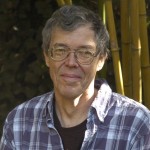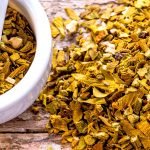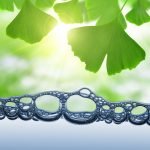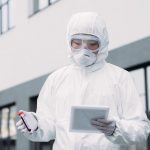The Naturopathic Profession and the Curative Value of Anthroposophic Medicine—Part 1
Robert B. Kellum, ND, PhD, MSOM/LAc, LMT
The principles of naturopathy are based on the belief that the body is self healing, that the patient’s “vital force” is restored by ridding the body of toxins. As scientists, we find this simplistic approach to human ailments to be in direct conflict with the science-based knowledge of body physiology and pathology as taught to MDs and DOs…. All forms of naturopathic education include concepts incompatible with basic science and do not necessarily prepare a practitioner to make appropriate diagnosis or referrals.
Jean M. Tsigonis, MD, Chair, Alaska State Medical Board (excerpt of a letter written to the Governor of Alaska, dated March 1, 2010)
The naturopathic profession is in serious crisis as to how it will envision itself. Recently, I attended a medical seminar, given largely to a naturopathic audience, in which a competent speaker made a number of passing statements regarding the current state, including the urgent need for all supplements to be sold by prescription, the unethical mind-set of treating serious diseases like cancer with naturopathic methods alone, the importance of isolating the main active constituents from (today’s less effective, cultivated) plants so that they can be utilized more effectively in higher doses as patent medicines, the inadequacy of conceiving of detoxification as a viable treatment modality, and so forth. A quick Google search of any one of these concepts opens a broader context in its reflecting the climate of the times.1 Within that broader climate, homeopathy, an important naturopathic modality, has also recently been under similar pressures of “revisioning,” being conceived, for example, as a dangerous sham that should be outlawed,2 with several organizations petitioning the Food and Drug Administration to review and potentially ban the sale of homeopathic remedies in the United States.3 At the same time, the line between homeopathy and vaccines has at times become deliberately confused, with some MDs promoting the vision that vaccines essentially are homeopathic remedies.4
Not all these mind-sets are malevolent. Some of them arise out of legitimate concerns, as in the maintenance of quality and safety standards. Yet, what is common in their focus is an attack on the view sometimes referred to in Western science as “vitalism,” the perspective that human beings have the capability of self-healing, that there is a healing capacity within us that can be tapped and promoted. This, and the self-empowerment that accommodates it, is the red thread that is invariably under attack in these visions for the future direction of healthcare. This is what is sought to be discredited, co-opted, and controlled. For no one in this “antivitalist” undercurrent is clamoring for removal of acetaminophen from drugstores because of its easily lethal misuse, no one is threatening to ban allopathic medicine owing to the inadequacies of its approach in treating cancer, and so on.5
Within our profession itself, these same kinds of paradigm conflicts have led the country’s leading naturopathic schools to become increasingly allopathic in their curriculum, as driven, for example, by the concern over maintaining the standards required for continued academic certification and eligibility for government funding. In our struggle for legitimacy as NDs, we are in danger of allowing the Western science paradigm to become such a pervasive aspect of our identity that we may well lose an important connection with our roots—and with the people our initiative was originally designed to self-empower in healing—for fear that we will not be sufficiently scientific. The naturopathic concept of “the vital force,” for instance, carrying an aura of controversy as to its meaning within the profession itself, has been so pressured under allopathic criticism as “pseudoscience” that I know of colleagues who, sometimes out of embarrassment and sometimes out of disdain, politely avoid its use.
The Pharmaceutical Two-Edged Sword
In a number of licensed states, NDs have won major formulary battles and have access to a medication list parallel to that of MDs and DOs. With this privilege comes greater responsibility to be competent in the use of these drugs and potentially to be more comprehensive in our care as NDs. Yet, this sword cuts both ways and can further sever us from our naturopathic connection. Colleagues in naturopathic medical school clinics tell me that prescription drugs are now part of the standard of care there and that they can be disciplined for not using them. With its emphasis on the physician-patient relationship and the use of more natural therapies for patient empowerment, naturopathy has traditionally been relatively free of malpractice suits in comparison with the allopathic world. However, with these changes bringing potential clinical confusion as to the core naturopathic mission with patients, the specter of a greater number of potential lawsuits looms larger.
The Heavy Hand of the Allopathic Model
In an equally important development, it is not uncommon today for graduating naturopathic students to be looking at $150 000 or more in educational debt, yet largely without the same market power as MD graduates in the same situation. In a recent issue of NDNR, Dr David Schleich, president of National College of Natural Medicine (Portland, Oregon), announced his bold vision for the future of the college, including a larger campus, a cafeteria, a gymnasium, and so forth. All this push into personal and institutional debt rests on faith in the continued expansion of the profession. However, under such pressures to expand and meet the dictates of a narrowly defined scientific culture, we are in serious danger, in the drive to survive in a competitive professional arena, of pushing ourselves further into a decline of our founding principles and more deeply into the allopathy we entered the naturopathic profession to transcend.
We are at a crossroad at which we have to ask ourselves what kind of world we live in and what future lies before us in consequence. It is more than simply about different ways of treating pathology here. We really are talking about whether or not we as human beings have the capability for self-regulation, for self-government, and for existing freely as cocreators of our reality. If the underlying tenets of Western medicine are correct, if no bridge can be built between our health and our own actions, then we indeed are destined to a deepening dependency on greater intervention in and control over our lives. Such a prospect seems so sordid that invariably when these types of discussions arise there are overtures made in some quarters toward the importance of allopathic medicine and naturopathic medicine working together in this transitional time, each from its own vantage point to the complement of the other. On the surface, such a marriage might be seen as a good thing, offering an allopathic future with less emphasis on pharmaceutical and technological dependence as requisites for human health, as well as an advancement of naturopathy into a more integrated and modern discipline, using drugs occasionally when warranted and engaging in practice, informed by rigorous research, in the promotion of self-healing. Yet, the predominant paradigm in this country still rules under the heavy hand of the allopathic model, and we have to seriously ask ourselves if indeed some type of future rapprochement can occur out of the battle between these 2 conflicting paradigms alone.
The Heart and Soul of Naturopathy Put to the Test
There is another dimension to medicine beyond simply handing out drugs or herbs to people: it is a soulful dimension that lies at the heart of what we do, involving compassion for the human condition and appreciation for the obstacles (self-imposed or otherwise) that arise and must be confronted in the management of the healing process. I believe that we have to ask ourselves, “Is this an integral part of any science, or is it but an emotional artifact to be somehow added on in clinic when possible based on one’s inclination or personality?” At a deep level, many of us, as we try to practice naturopathy as we have been trained, are wondering what is happening to the heart of the medicine that brought us to this profession and whether something further is needed, as integral to our medicine itself, to more fully activate the healing process in our professional relationships with patients.
We are at a healing crisis in which we have to find a way to integrate the science of today, while carrying forward the healing traditions of our past, without getting locked in either. Many of us in the naturopathic profession find ourselves experiencing the same kinds of noncompliance issues with our patients as do our allopathic colleagues, sometimes with patients who want quick fixes, or patients whom we fail to inspire, or patients for whom a deeper healing seems needed than the medicine can provide. Where is the line to be drawn between “firing” such patients in favor of a successful practice vs conceding a failure of our medicine to sufficiently touch the human condition so as to inspire patients with a true mirror for change? How do we unravel this dilemma? As of 2007, about 44% of the nation’s largest businesses, to the satisfaction of insurance companies and employees alike, offered “health coaches” to their employees—professionals who help clients develop better habits, routines, and outlooks—playing the role of motivator, support figure, and educator and infusing the connection with a healthy dose of heartfelt support and the development of personal accountability.6 Corporate healthcare incentives are also gaining increasing popularity and effectiveness.7 With the right incentives, we are seeing that individuals who might not otherwise make life changes are finding the will to do so. Is this not the connection we want with our patients? What incentives are we offering them? What possible incentives could we offer them? Like all healing crises, perhaps these inflammatory times call on us to change the paradigm of our outlook and behavior if we are to survive. Perhaps it is courage, and bold measures, to envision ourselves in a broader scope (such as in this health coaching example) to step outside the potentially restraining limits of our professional selfhood. Like all crises, it places before us serious questions about our identity. Is our only entry into such an approach dependent on uniting ourselves with corporations and harnessing the motivations of peoples’ needs for jobs, as guided by company goals? Is there no other way to inspire healing on a broad scale? We really have to ask ourselves who we are and what we are doing. The answer to this question must ultimately come not from more torturous and authoritarian elaborations of becoming “more scientific” but from a living vision we bring to the very conception of what science is.
Integrative Denigration?
More than 50 US hospitals and medical centers now have integrative medicine centers or programs.8 Western medicine’s denigration of naturopathy is perhaps overshadowed only by its drive to subsume it. Given that $34 billion was spent on alternative medicine in 2007 alone (mostly out of pocket, by 4 of every 10 adults), this should hardly be a surprise.8 Yet, the general state of affairs I witness among my naturopathic colleagues is that a good number of us are barely scraping by. How can this be, in a medicine that has so much to offer? How can this be, when under the care of highly profitable allopathic medicine, so many of us have watched loved ones die slow painful deaths or at best carry the debility of a disease that medications only prolong and compound?9 Surely, what we have to offer must speak to people more loudly. If not, what aspect of the heart of our medicine might be missing in our efforts to move naturopathy forward? Is this just a matter of a need for better communication, better marketing? Surely, learning how to “click” with patients is an important component of any success. But what are the meanings we give to our relationships with patients? What world do they come into when they walk through our door? How do we listen to them? How do we talk to them? Is our potential success at this all just a matter of individual personality, or does it also necessitate a holistic mind-set—yes, a mind-set largely missing from allopathy but a mind-set we are not fully developing either because at a fundamental level it is lacking from our medicine as well?
The Holism and Spirituality of Our Profession
Our roots come out of a strong connection with holism and the natural world. They have linkages with the medicine of Hippocrates,10 who saw the physician as a servant of nature, treating the patient, not the illness, by assessing the balance of the 4 “humors” (temperaments) and promoting a spiritual restorative capability to overcome disease (vis medicatrix naturae). Our roots have linkages with the purification treatments and communion with the spirit world through sleep in the temples of Asclepius.11 They have linkages with Paracelsus and his working with the principles of the 3 spiritual substances (salt, sulfur, and mercury) as the 3-fold basis for balancing body, mind, and spirit in the curing of disease. And of course they have linkages with Hahnemann12 through his development of homeopathy and the law of similars and in his use of trituration and succussion to release the spiritual healing power of the remedy and promote the vital force of the patient. These are some of our major forebearers. Did you notice the interplay of spirituality in the work of all these giants we rest on? Yet, how many of us have truly integrated this in the science of what we do today?
In the growth and revival of naturopathy in the past 150 years or so, our approach has gradually lost this spiritual connection and become increasingly more clinical and “naturalistic,” integrating itself with the science of Western medicine as its foundational anchor. We have all been given some version of our history in our training. Some consider Priessnitz13 (1799) the first more modern-day “nature doctor” in his use of cold water, fresh air, and simple diet to treat more than 40 000 patients. Heinrich Franckecontinued Priessnitz’s work in clinically developing a science of hydrotherapy, as did Sebastian Kneipp in further developing “nature cure” such as in his adding the use of healing herbs. Much like today, many of these original nature physicians were inspired by the inability of the medicine of the time to address their own health conditions. Their work, especially Kneipp’s, had a major impact on the further development of naturopathy in America.
Benedict Lust’s title as “father of naturopathy” arose from his facing a diagnosis of an incurable tuberculosis. Traveling to Bavaria, he was completely cured by Kneipp, who allowed Lust to implement his methods in the United States. In 1901, after becoming a DO, Lust14 founded the American School of Naturopathy in New York; in 1902, he founded the American Naturopathic Association, and his work at the Bellevue Sanitarium Nature Cure Retreat brought a great surge in the popularity of naturopathy. Similarly, Henry Lindlahr (the founder of “scientific naturopathy”) was also restored to health by visiting Kneipp. Lindlahr eventually graduated as an American MD and in 1906 started a sanatorium15 where he practiced natural healing by strengthening the vital force through natural therapies (water, air, sunlight, diet, herbs, homeopathic remedies, and engaging the power of the mind).
What some people do not know is that Lindlahr incorporated an understanding of the Hippocratic humors and a 3-foldedness of the human being in his nature cure as well, not unlike the 3-fold being found in anthroposophy and Paracelsus. Lindlahr conceived nature cure as “a system of building the entire being in harmony with the constructive principle in Nature on the physical, mental, moral and spiritual planes of being,” seeing health as “a harmonious vibrational balance between these planes.”16 He saw the spirit-body as a counterpart of the physical organism and recognized the close agreement between physical healing and spiritual healing.16 What some people do not know is that Lust required matriculants of his school to take classes not only in herbalism and hydrotherapy but also in courses such as “soul-marriage” and spiritual unfoldment and that he saw the restoration of the body to wholeness as only brought about through reconnection with a divine spiritual force, what he termed a therapeutic universalism. He saw naturopathy, in fact, as a great spiritual upheaval, comparable in scope to the Crusades or the Reformation.17
Otis Carroll was cured of his rheumatic fever and juvenile arthritis at an Institute of Natural Therapy under the care of an MD who had studied with Kneipp (Dr Alex LeDoux). This inspired him to pursue further study with LeDoux, and he also studied with Lindlahr, eventually setting up a practice in Spokane, Washington, where he is best known for his development of constitutional hydrotherapy, detection of food intolerances, and the use of iridology as a diagnostic tool. Like many other naturopathic physicians, he valued training in the nature cures of the original healers as more useful than the medical training of allopathic physicians, and he trained many NDs at his own clinic, some of whom continue to carry these traditions of stimulating self-healing forward today, and from which the impetus for the latter-day revival of American naturopathy has arisen.18
All professions must grow and evolve to stay vibrant. Our profession grows out of a tradition that has spanned centuries in which understanding the spiritual vital forces behind substances and illness has been seen as the key to healing. In the transition to modern times, however, the spiritual underpinning of this vital force, wanting in clarity from its inception, has been increasingly reduced to more mechanistic terms. All NDs will recognize some version of the aforementioned abbreviated lineage as an account of how our profession has arisen. Some might paint it a little differently perhaps, but all would agree, I think, that the centrality of spirit evidenced from Hippocrates through Hahnemann has today taken a decided backseat as the 20th century has advanced. We may cast our medicine in the spiritual light of nature and “nature-ism,” but we support it in the professional arena on the firmer empirical foundations of Western science and increasingly on the tacit belief that a spiritual secularism is essential for the attainment of scientific truth. Today, we look at the spiritual concepts of someone like Paracelsus as antiquated, prescientific, tied to superstition, and in need of somehow being spiritually sanitized to be applicable in the modern world. Certainly, there are truths here as well. We must develop medicine for our times, not in slavish deference to a no-longer existent world of the past. From the time of Lust and Lindlahr, we have increasingly taken the tack of reducing our spiritual connection to but a suggestive concept, the vital force, with little elaboration of its potential scientific meaning.
While this has perhaps served us for many years in distinguishing us from allopathy, it is reaching the limits of its own internal contradiction. Today, we are facing the challenge of how to move the initiative of naturopathy forward into the future, in continued distinction from allopathic medicine, while also not somehow being hostage to the limitations of our past. As Goethe once asked, how do we admit the merits of our older contemporaries, while not allowing their shortcomings to impede us?
What More Must We Do?
Today, the clinical modalities of Lust, Lindlahr, and many others in our history, while continuing to call on us for their mastery, are nevertheless in and of themselves not enough. Each of us obviously is unique and draws on our particular strengths in shaping our practice. But in today’s world of ever-developing antibiotics and vaccinations, of polymerase chain reactions for genetic and forensic investigations, of more sophisticated surgical techniques (eg, laparoscopies, laser eye surgery, robotic heart surgery, etc), of organ transplants, prosthetic replacements of body parts, precise radiation target delivery systems for cancer, genome mapping, cloning, embryonic stem cell research, neural implants, and increasing use of computers interfacing with the body, Western materialist science is following the dictates of its logic and is expanding its paradigm accordingly.19 We have largely been hitchhikers in the backseat of this vehicle, and as it has increasingly not been going where we want it to go, we also take increasing risk now of getting run over by it, should we get out. We are in serious crisis, and if we are to get out of this crisis, the current vital force of Father Kneipp, underlying much of our tradition,20 must transcend its quasireligious limitations and find a way to keep pace with Western science, a science that, in the success of its expansion, is also expanding on the paradigm that the human body is not capable of self-regulation and is increasingly only to be “healed” by its technological replacement, radioactive bombardment, computer management, shuffling of body parts, and genetic engineering21 In this world, where the threat of increasing human expropriation is wrapped in scientific advancements that alleviate human suffering, we sorely need a scientific paradigm that expands on our identity, while taking us more deeply into a nature-based holistic science that can bring our potential to a larger realm. Naturalism does not have an intelligent counter to this increasing rationalization of the human body.22 Much like Bruce Dern in the film Silent Running (1972), who mans a last outpost of arboretum space pods desperately attempting to save the remaining trees of earth, we are increasingly coming across as deluded idealists in a world devoid of a metaphor for understanding what is wrong with our being replaced. Western science alone is not in and of itself enough to turn this around. We need our own vision of science.
This indeed has been at least part of the mission of a number of our profession’s leaders in formulating the Foundations Project,23 as in, for example, their recent efforts to develop a deeper scientific understanding of the vital force (vis medicatrix naturae) as one of naturopathy’s core and distinguishing concepts. Clearly, it is to the Foundation Project’s credit that it seeks to elevate our understanding of the vital force to a higher science. I want to suggest, however, that this brings us right up against the primary contradiction of our time. The vital force, from Hippocrates through Hahnemann and beyond, has consistently been a mechanistic concept that is connected with, yet seeking ever deeper, spiritual illumination. Ultimately, we are going to require a spiritually based medical science to open our horizons to its deeper understanding. But this can not happen within the materialist confines of the current Western science we have adopted.
If we are to truly understand what is going on here, the vital force must first and foremost be conceived as a spiritual concept (“spirit” as the animating or vital force underlying life, as in spiritus, or breath); furthermore, the spiritual potential it augurs must be seen to lie at the root of naturopathic medicine. Once we have faced this, we have to decide what we are going to do about it.
As NDs, then, in search of moving our profession forward, if we are willing to let go of essentially the old religions of naturalism and materialism, we stand at the threshold of pioneering the advancement of medical knowledge by virtue of providing the space in which it can let itself be fertilized by the science of the spirit—a fertilization that can eventually transform it completely. There are those of us in our profession who seek to embrace this challenge. There are those of us who see it as rife with potential cultism, sectarianism, and even mysticism and do not feel that it serves the profession to go there, other than on an individual basis, reflecting each person’s right to engage in any one of many spiritual practices but not as a broad basis of science itself. This is part of our crisis. For those of us who do embrace it, how can we move this forward in a way that respects our critics’ concerns? This is an important basis for a growing number of us who are feeling that we need to develop a science of naturopathic medicine that is anthroposophically enhanced
To be continued in forthcoming NDNR issues.
Thanks to friends and colleagues Dr Alicia Landman-Reiner, Dr Dick Thom, Dr Paul Kalnins, Dr Heiner Fruehauf, Dr David Bartelt, Dr Philip Incao, and Donna Patterson, LMT, for their helpful feedback in editing and revising this article. Final responsibility for the ideas within it are solely the author’s.
 Dr Robert Kellum is a board-licensed ND and practitioner of Traditional Chinese Medicine, seeing patients in Portland, Oregon. With other interested colleagues, he is spearheading the development of the Society for Physicians of Anthroposophic Naturopathic Medicine (SPAN-MED), with the intent of its being part of an umbrella group within the Anthroposophic Association of Medical Therapies in America (AAMTA), for developing the cross-disciplinary seeds of an integrated spiritual science through the drawing together of NDs and like-minded colleagues as a conscious force in their professions. For more information, you can contact Bob at [email protected].
Dr Robert Kellum is a board-licensed ND and practitioner of Traditional Chinese Medicine, seeing patients in Portland, Oregon. With other interested colleagues, he is spearheading the development of the Society for Physicians of Anthroposophic Naturopathic Medicine (SPAN-MED), with the intent of its being part of an umbrella group within the Anthroposophic Association of Medical Therapies in America (AAMTA), for developing the cross-disciplinary seeds of an integrated spiritual science through the drawing together of NDs and like-minded colleagues as a conscious force in their professions. For more information, you can contact Bob at [email protected].
References
Sasidharan S, Chen Y, Saravanan D, Sundram KM, Yoga Latha L. Extraction, isolation and characterization of bioactive compounds from plants’ extracts. Afr J Tradit Complement Altern Med. 2011;8(1):1-10. See Life Extension. New bill seeks to ban consumer access to dietary supplements. http://www.lef.org/featured-articles/Dietary-Supplement-Safety-Act-of-2010.htm. Accessed September 22, 2012. See also Science-Based Medicine. Cancer Treatment Centers of America and “naturopathic oncology.” http://www.sciencebasedmedicine.org/index.php/cancer-treatment-centers-of-america-and-naturopathic-oncology/. Accessed September 22, 2012. See also Wikipedia. Detoxification (alternative medicine). http://en.wikipedia.org/wiki/Detoxification_(alternative_medicine). Accessed September 22, 2012.
Noë A. 13.7: Cosmos and culture: is homeopathy a sham? http://www.npr.org/blogs/13.7/2012/03/23/149139145/is-homeopathy-a-sham. Accessed September 22, 2012.
The Pharma Letter. Citizen petition calls on US FDA to review regulation of homeopathic drugs. http://www.thepharmaletter.com/file/107384/citizen-petition-calls-on-us-fda-to-review-regulation-of-homeopathic-drugs.html. Accessed September 22, 2012.
Jet Zone. Jet lag management. http://www.healingedge.net/pdf/jetzone_brochure.pdf. Accessed September 22, 2012.
Moss RW. Questioning Chemotherapy. Brooklyn, NY: Equinox Press; 1995. See also Care CA. Effectiveness or ineffectiveness of chemotherapy, part 2: what some oncologists say. http://ejtcm.com/2011/03/17/effectiveness-or-ineffectivenes-of-chemotherapy-part-2-what-some-oncologists-say. Accessed September 22, 2012.
Darcé K. Teaming up for health: more insurers offer coaches for clients to live better. May 26, 2007. longerhttp://www.healthcoachtraining.com/news/news2007_05_26.shtml. Accessed September 22, 2012.
http://www.altergroup.com/alter-care-blog/index.php/healthcare/do-corporate-healthcare-incentives-work.
American Holistic Medical Association. Fast facts. http://www.holisticmedicine.org/content.asp?pl=2&sl=87&contentid=87. Accessed September 22, 2012.
It is certainly not my intention to promote the idea that allopathic medicine has nothing to offer healing. Clearly, it does, in many and often quite miraculous ways. There are many quite skilled and wise individual MDs, who help many people. Many technological developments and surgical procedures have been truly life-saving for many patients, and in ways that naturopathic medicine presently “can’t hold a candle to.” But the fundamental precepts of allopathic medicine itself are mechanistic, focusing on the alleviation of symptoms as “curative” and precluding a holistic basis of healing. Even as it is a system still commanding national primacy, few would argue against the growing need for its dramatic transformation.
Greek Medicine. Hippocrates: father of medicine. http://www.greekmedicine.net/whos_who/Hippocrates.html. Accessed September 22, 2012.
Rankin D. Holistic healing through spiritual fitness. http://ezinearticles.com/?Holistic-Healing-Through-Spiritual-Fitness&id=2230119. Accessed September 22, 2012.
Hahnemann S. Organon of Medicine. Aphorisms 11-20.
Metcalfe RL. Life of Vincent Priessnitz: Founder of Hydropathy. http://books.google.com/books?id=YoAXAQAAMAAJ&pg=PA37&lpg=PA37&dq=priessnitz+spirit&source=bl&ots=QsyppRSQTf&sig=zHwjBfLDHtM7TV9ZEZgelMECTJg&hl=en&sa=X&ei=Y3_nT8iDC-OS2QXj2bnaCQ&ved=0CEsQ6AEwAQ#v=onepage&q&f=false. Accessed September 22, 2012.
Wikipedia. Benedict Lust. http://en.wikipedia.org/wiki/Benedict_Lust. Accessed September 22, 2012.
An History of the Fight Against Tuberculosis in Canada. The sanatorium age: “sanatorium” vs. “sanitarium.” http://www.lung.ca/tb/tbhistory/sanatoriums/type.html. Accessed September 22, 2012.
Lindlahr H. Nature Cure: Philosophy & Practice Based on the Unity of Disease & Cure. 1913. http://www.pulsemed.org/nature-cure-free-book-download.pdf. Accessed September 22, 2012.
Whorton JC. Benedict Lust, naturopathy, and the theory of therapeutic universalism. http://www.la84foundation.org/SportsLibrary/IGH/IGH0802/IGH0802e.pdf. Accessed September 22, 2012.
Sutherlandia OPC. Understanding naturopathy. http://www.sutherlandiaopc.com/. Accessed September 22, 2012.
Geraci RM. The cult of Kurzweil: will robots save our souls? April 5, 2011. http://www.religiondispatches.org/archive/culture/4456/the_cult_of_kurzweil%3A_will_robots_save_our_souls/. Accessed September 22, 2012.
Kirchfield F. Nature Doctors. Portland, OR: Medicina Biologica; 1994. See a discussion of Jean Jacque Rousseau’s “naturalism” as the ideological basis behind “nature cure.” Friedhelm, a kindly librarian loved by many at National College of Natural Medicine, influenced the development of a great number of naturopathic students. He was himself, by the way, an anthroposophist and is largely responsible for my own sojourn in this direction.
Daniel H. Wilson on Singularity 1 on 1: we can’t win against technology: we are technology! http://www.singularityweblog.com/daniel-h-wilson-on-singularity-technology/. Accessed September 22, 2012. For example, see Daniel Wilson’s future vision of “amped” humans arising through technological enhancement of previous deficits.
Wikipedia. Rationalization (sociology). http://en.wikipedia.org/wiki/Rationalization_(sociology). Accessed September 22, 2012.
Foundations Project. Foundations of Naturopathic Medicine Project: codifying our knowledge: it’s time. http://www.foundationsproject.com/. Accessed September 22, 2012.




